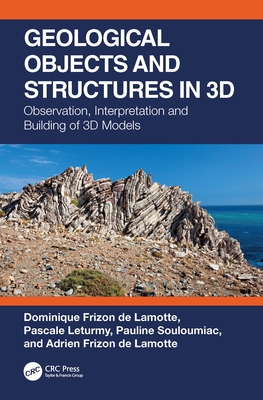Spatial Context: An Introduction to Fundamental Computer Algorithms for Spatial Analysis (ISPRS Book Series)(Hardcover)
暫譯: 空間上下文:空間分析基本計算機演算法導論 (ISPRS 書系) (精裝本)
Christopher Gold
- 出版商: CRC
- 出版日期: 2016-08-31
- 售價: $8,100
- 貴賓價: 9.5 折 $7,695
- 語言: 英文
- 頁數: 232
- 裝訂: Hardcover
- ISBN: 1138029637
- ISBN-13: 9781138029637
-
相關分類:
Algorithms-data-structures
海外代購書籍(需單獨結帳)
相關主題
商品描述
Many disciplines are concerned with manipulating geometric (or spatial) objects in the computer – such as geology, cartography, computer aided design (CAD), etc. – and each of these have developed their own data structures and techniques, often independently. Nevertheless, in many cases the object types and the spatial queries are similar, and this book attempts to find a common theme.
The book starts with some of the basics of manipulating coordinate representations so that the resulting object descriptions may be usefully combined and queried. The first chapter should be of value to research students in fields with limited prerequisites in mathematics and computing.
The book then considers the concepts necessary to express the spatial relationships between both 2D and 3D entities, whether points, lines, polygons or polyhedra, so that they may be queried, grouped or combined. A unifying theme is a discussion of the various types of boundaries between regions of space, based on the Voronoi diagram and its dual, the Delaunay triangulation, and various available static, dynamic and kinetic algorithms. Applications, including surface interpolation, crusts and skeletons, contour and watershed handling, scanned map processing and solid line-work for urban mapping, are then described: this leads to the Unified Spatial Model for 2D mapping and GIS.
The last section examines 3D space – both simple shell models for building exteriors as well as true 3D, where volumetric elements may be defined, such as rooms and corridors. Shell models require some introduction to basic CAD structures, and solid 3D requires advanced edge-based data structures. Both of these application areas lead to straightforward modelling techniques and emphasize the moral of this book: the spatial dual is the context. Example application areas described include geology, geography, forestry, surveying, cosmology, CAD – and many others.
商品描述(中文翻譯)
許多學科都關注於在電腦中操作幾何(或空間)物件,例如地質學、製圖學、電腦輔助設計(CAD)等,這些學科各自發展了自己的資料結構和技術,通常是獨立進行的。然而,在許多情況下,物件類型和空間查詢是相似的,本書試圖找到一個共同的主題。
本書首先介紹一些操作座標表示法的基本知識,以便所產生的物件描述可以有效地結合和查詢。第一章對於數學和計算機科學基礎知識有限的研究生應該是有價值的。
接著,本書考慮了表達2D和3D實體之間空間關係所需的概念,無論是點、線、多邊形還是多面體,以便它們可以被查詢、分組或結合。一個統一的主題是討論基於Voronoi圖及其對偶的Delaunay三角剖分的各種空間區域邊界類型,以及各種可用的靜態、動態和運動算法。然後描述了應用,包括表面插值、地殼和骨架、輪廓和集水區處理、掃描地圖處理以及城市製圖的實線工作:這導致了2D製圖和地理資訊系統(GIS)的統一空間模型。
最後一部分探討了3D空間——包括建築外部的簡單外殼模型以及真正的3D,其中可以定義體積元素,例如房間和走廊。外殼模型需要對基本CAD結構進行一些介紹,而實體3D則需要先進的基於邊緣的資料結構。這兩個應用領域都導向簡單的建模技術,並強調了本書的道德:空間對偶是上下文。所描述的示例應用領域包括地質學、地理學、林業、測量學、宇宙學、CAD等,還有許多其他領域。































